Robotics Education Journal
 12/25/2020
12/25/2020 Daniel Rogge of TORMACH has presented a YouTube video on the new TORMACH Robot Arm, or “ROS-Based Open Industrial Manipulator.” TORMACH is an employee-owned company of about 40 people based in Madison, WI. Their mission is to help people make things, and TORMACH has been offering computer controlled (CNC) machining equipment such as milling machines, lathes, surface grinders and similar tools for many years. TORMACH controllers are built on top of the open-source LinuxCNC framework.
 12/18/2020
12/18/2020 The U.S. Marine Corps wants to equip its infantry units with a man-portable, swarming loitering munition to help counter China’s growing military with a light and deadly seaborne infantry force. The “Organic Precision Fires - Infantry Light” program is pursuing ground-launched drones that have a range of up to 20 kilometers, can loiter for 90 minutes, swarm, be jam resistant and able to take out both enemy troops and equipment.
 12/18/2020
12/18/2020 David Hambling of Aerospace & Defense, Forbes.com, reported that the NAVY has developed the ability to guide torpedos far beyond the horizon using airborne drones. Hambling reported that Adm. Dave Goggins revealed the deployment in a webinar at the Naval Submarine League’s annual symposium. Speaking Nov. 18, Adm. Goggins said the SLUAS was “a pretty awesome capability to provide to the fleet.” The drones are launched from beneath the surface from 3-inch tubes normally used for noisemaking decoys. The UAVs bob to the surface, unfold and take off.
 12/15/2020
12/15/2020 TEL AVIV (JNS) “A recently launched artificial intelligence (AI)-driven operating system company allows companies to receive an unprecedented level of operational efficiency and data-driven decision-making, according to Michael Ouliel, founder and CEO of BlackSwan Technologies. Its signature Platform, ELEMENT, combines multiple AI technologies such as machine learning, natural language processing, deep learning, neural-network and data-operation facilities into a single platform. …ELEMENT is described by BlackSwan Technologies as a cognitive operating system that enables the rapid development of enterprise applications in any number of areas critical to companies—from product design, finance, marketing, supply chain and human resources.” BlackSwan Technologies launched officially in October and has generated tens of millions of dollars’ worth of contracts with leading businesses.
 12/14/2020
12/14/2020 Undefined Technologies, a startup based in Doral, about 15 miles out of Miami, says it has managed to increase the thrust levels of ion propulsion systems to “unprecedented levels” with its “Air Tantrum” technology, thereby enabling nearly silent drones to slowly fly with no moving parts. Instead of using fans or blades, ionic propulsion uses electromagnetism. Undefined Technologies’ prototype is shown hovering in a test laboratory at the top. Other companies as well as university level research groups are entering the prototype ion-propelled aircraft testing phase.
 12/11/2020
12/11/2020 Bloomberg.com/news reported that Hyundai Motor Group, along with some associated companies and Chairman Euisun Chung, will acquire an 80% interest in Boston Dynamics from SoftBank Group Corp, leaving the Japanese firm with a 20% share, the companies said in a Friday statement. The Bloomberg reports noted that South Korean conglomerate Hyundai Motor Group has been beefing up its research in robotics as it expands further into electric and autonomous vehicles.
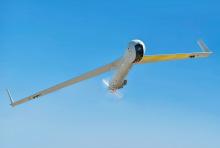 12/08/2020
12/08/2020 NAVY experts are purchasing 15 ScanEagles for the Afghanistan National Army intelligence, surveillance, and reconnaissance (ISR) military department under a $9.8 contract. The ScanEagle can carry a sensor payload consisting of a visible-light camera, a medium-wave infrared imager, or both integrated in one turret. It is a relatively small UAV but can fly as high as 19,500 feet at speeds of up to 80 knots, and can stay on mission for 24 hours.
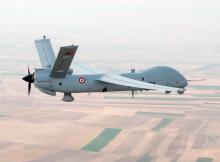 12/05/2020
12/05/2020 A revolution in orchestrated drone warfare has riveted the attention of world powers. The decisive military defeat inflicted on Armenia by Turkey’s ally, Azerbaijan, has brought this development to the fore. It has been likened to the arrival of tanks on the battlefield that obsoleted horse-mounted cavalry. This new form of warfare integrates intelligence, reconnaissance and surveillance (IRS) with electronic warfare and pinpoint real-time targeting of weapons. It was reported by Scott ritter at Lewrockwell.com that "For every $1 in losses suffered by Turkey, Syria lost approximately $5". 2,425 Armenian soldiers were reportedly lost in the fighting, as well as 185 T-72 tanks, 182 artillery pieces, 73 multiple rocket launchers, 90 armored fighting vehicles and 26 surface-to-air missile systems. What was behind this?
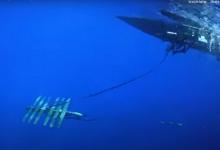 12/02/2020
12/02/2020 The Liquid Robotics Wave Glider is a surf-board-size unmanned surface vessel powered by wave and solar energy, and it can cruise in normal weather conditions at 3 knots. Military applications of the Wave Glider include anti-submarine warfare (ASW), countermine operations, coastal and border security, drug and human trafficking interdiction, and maritime domain awareness. Wave Glider has two components -- a surface vehicle and a tethered submersible with moving wings that dangles underneath the surface vessel and uses wave energy for forward propulsion.
 11/26/2020
11/26/2020 Parallax, founded by Ken Gracey, is one of the venerable, pioneering robotics education companies that have created an industry supporting educators, students and hobbyists in recent decades. Parallax is the creator of the multicore Propeller and the original BASIC Stamp microcontrollers. Parallax’s Boe-Bot is widely used in education and by hobbyists, as are many other robots and robotics products originated by Ken and his engineering team at Parallax. Parallax has recently updated its website, and you probably want to take a look! It represents a lot of work and is a lot of fun to explore!
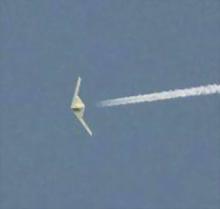 11/24/2020
11/24/2020 A picture of the RQ-180 high altitude unmanned aircraft system (UAS) was reportedly taken a few weeks ago inside the Military Operating Area around Edwards AFB, California. “The picture was taken in daylight hours, and the unknown aircraft was flying above California City in a racetrack pattern at an estimated altitude of 20,000 ft.”
 11/18/2020
11/18/2020 DefenseNews.com announced that Turkey is launching its first Combat Unmanned Surface Vessel (CUSV). A partnership between two leading Turkish defense companies has launched the country’s first armed unmanned surface vessel, the ULAQ. The new CUSV is “equipped with day and night vision capabilities as well as encrypted communication infrastructure, which can be operated from mobile vehicles and headquarters or from sea platforms such as aircraft carriers or frigates. That infrastructure can be used for intelligence, surveillance, reconnaissance, surface warfare, asymmetric warfare, escort and strategic infrastructure protection missions.” The first vessel will enter Mediterranean waters in December.
 11/17/2020
11/17/2020 Join the UAS community every day this week to focus on an important element of safe drone operations. As the market continues to grow, so do training opportunities for remote pilots that ensure safe, reliable service. Explore the available resources and discover how best practices can be implemented into new or existing operations.
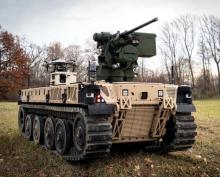 11/14/2020
11/14/2020 QinetiQ formally delivered the first of four experimental “light” Robot Combat Vehicles (RCV-Ls) to the Army on 5 November. They will be used with 4 Textron RCV-Mediums in 2022 field tests. The Army plans to buy 16 more of each as it scales up to determine the feasibility of using a forward line of robots that precede human troops on the battlefield. Building on years of R&D by the Marine Corps Warfighting Laboratory in Quantico, Virginia, the ongoing collaborative effort brings together technologies from QinetiQ, Pratt Miller and the Army’s Ground Vehicle Systems Center.
 11/12/2020
11/12/2020 As reported in a preview of the next edition of the Unmanned Systems News (USN), “The robotic fleet will survey water from the surface to a depth of 2,000 meters — more than a mile deep. They will continuously collect data that scientists use to observe ocean ecosystems and monitor elemental cycles of carbon, oxygen, and nitrogen in the ocean. The floats will also gather data on the growth and respiration of phytoplankton, which provide the basis for the ocean's food web, and regulate carbon cycles.”
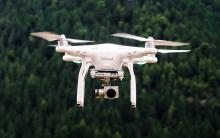 11/08/2020
11/08/2020 Stealth Technologies will collaborate with autonomous drone technology company, Planck AeroSystems in the development of systems for launching off of and landing onto moving unmanned ground vehicles and surface vessels. Planck’s core enabling technology is vision-based precision landing on moving platforms without GPS.
 11/03/2020
11/03/2020 The 14th Annual UAS Summit & Expo was held as on online event October 28-29. The Northern Plains of North Dakota have become known to many as the Silicon Valley of Drones owing to the volume of commercial, governmental and military UAS flights conducted there yearly. The UAS Summit again provided attendees with a comprehensive overview of the current state of the UAS industry. This brief recap underscores why you may wish to add this to your annual schedule.
Keynote speakers included:
- Senator John Hoeven, U.S. Senate
- Administrator Steve Dickson, Federal Aviation Administration
- Brigadier General Heather Pringle, Commander, Air Force Research Laboratory, Air Force Materiel Command, U.S. Air Force
- Senator Kevin Cramer, U.S. Senate
- Dr. Derek Tournear, Director, Space Development Agency
- Brent Sanford, Lieutenant Governor, State of North Dakota
- Andrew Armacost, President, University of North Dakota
Presentations were also given by speakers from Northrop Grumman, L3Harris Technologies, Thales, Northern Plains UAS Test Site, and more.
 10/28/2020
10/28/2020 The UAS Summit & Expo started as a small gathering of regional stakeholders. Now, 14 years later, the event in the Northern Plains of North Dakota has become a major yearly event for UAS experts from around the world. It’s the original epicenter of drone research, earned its place as the Silicon Valley of Drones and as you’ll see from the commercial, government and military flight activity filling the sky of the Northern Plains and beyond every day, it has truly become America’s UAS proving grounds. The UAS Summit will provide attendees with a comprehensive overview of the current state of the unmanned aircraft systems industry.
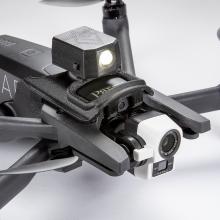 10/24/2020
10/24/2020 For Immediate Release, compliments of AUVSI San Diego:
OCEANSIDE, CA, October 18, 2020 – FoxFury Lighting Solutions (FoxFury) announces the launch of the Made in USA D10 lights for small format drones. The D10 is an ultra-lightweight, small format drone light that meets global night flight requirements. The D10 improves image capture quality and features:
The D10 improves image capture quality and features:
-Battery Life of 30 - 80 minutes
-Rechargeable LiPo Battery System
-2 Modes (high & strobe)
-200 Lumens.
"FoxFury leads the industry with made in the USA lighting products. The emergence of sUAS legislation was the driving factor for us to manufacture a line of drone lights that are made in the USA and trade compliant," said Mario Cugini, CEO, FoxFury Lighting Solutions.
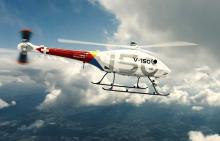 10/20/2020
10/20/2020 In a world’s first demonstration, the Skeldar V-150 was autonomously flown across continents while under the observation and control of a team based in Switzerland. UMS SKELDAR will now be able to provide remote product demonstrations to prospective customers on a global basis.
 10/15/2020
10/15/2020 In the twentieth edition of the Decision 2020 Report, Hoover fellows assess the economic, national security, and geopolitical implications of innovations in artificial intelligence (AI). Hoover fellows speak for the Hoover institution. As described by Wikipedia, “The Hoover institution on War, Revolution, and Peace is an American public policy think tank and research institution located at Stanford University in California. Its mission statement outlines its basic tenets: representative government, private enterprise, peace, personal freedom, and the safeguards of the American system.” It is regarded as advocating a conservative viewpoint on questions of policy and governance. The report notes that AI will “…force a change in thinking about how nations manage their security challenges and adapt their militaries.”
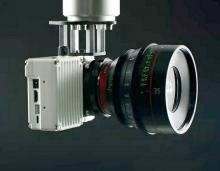 10/10/2020
10/10/2020 The new WAVE camera from FreeFly is now available to well-heeled roboticists, researchers and institutions. It offers continuous 2K and 4K high-speed streaming image capture, with packages from $9,995.00.
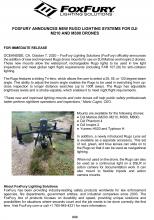 10/09/2020
10/09/2020 OCEANSIDE, CA, October 7, 2020 -- FoxFury Lighting Solutions (FoxFury) officially announces the addition of new and improved Rugo drone mounts for use on DJI Matrice and Inspire 2 drones. These new mounts allow the waterproof, rechargeable Rugo lights to be used in low light inspections and meet global night flight requirements (including FAR 107.29) for anti-collision lighting.
 10/08/2020
10/08/2020 It was reported in the # 20 - 20 - 3 OCTOBER 2020 issue of the Unmanned Systems News (USN) that AeroVironment has unveiled its Switchblade 600, a loitering munition with a larger, anti-armor warhead than earlier versions. Switchblade 600 is the first in a series of new loitering munitions AeroVironment plans to offer, the company said on 30 September. The new loitering munition weighs 22.7kg (50lb), is man-portable and can be set up for deployment from a launch tube in less than 10min. It also can be configured for launch from a vehicle or slow-moving aircraft. The UAV is powered by an electric battery and propeller. It has endurance to fly 43nm (80km) and make multiple orbits above a target before striking. That equates to about 40min of flight endurance, says AeroVironment. It has a dash speed of 100kt (169km/h).
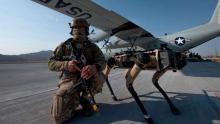 10/05/2020
10/05/2020 Electronic canines are just one link in what the US military calls the Advanced Battle Management System (ABMS). ABMS uses artificial intelligence and rapid data analytics to detect and counter threats to US military assets in space and possible attacks on the US homeland with missiles or other means. Sgt. John Rodiguez, 321st Contingency Response Squadron security team, patrols with a Ghost Robotics Vision 60 prototype at a simulated austere base during the Advanced Battle Management System exercise on Nellis Air Force Base, Nevada, Sept. 3, 2020.
